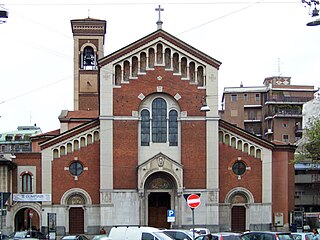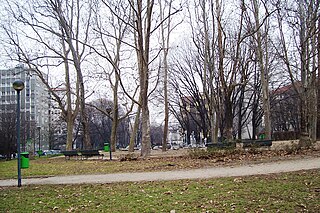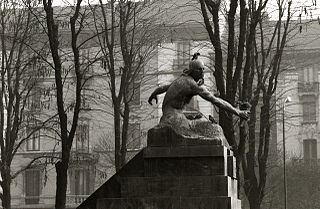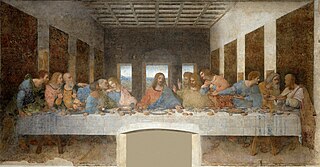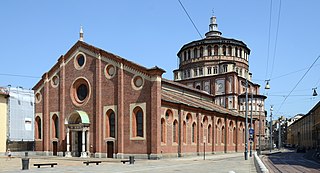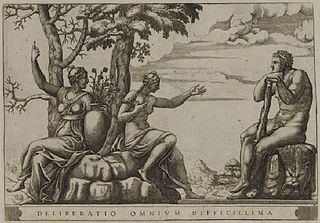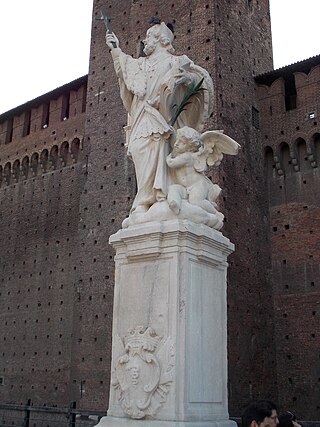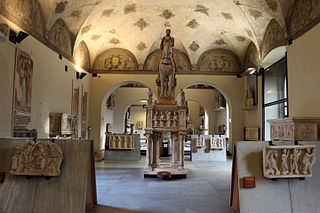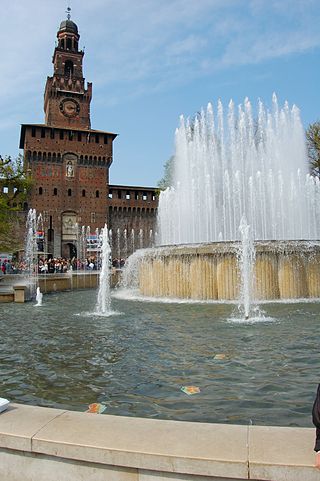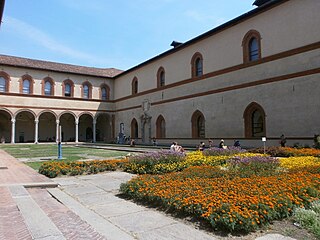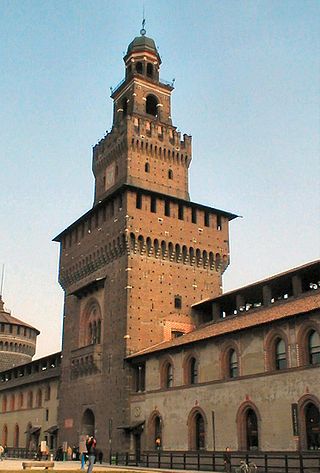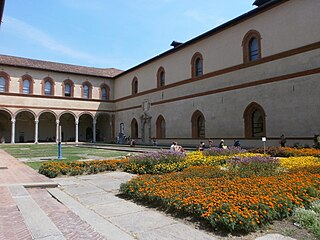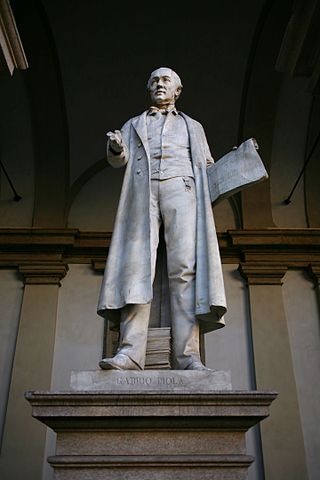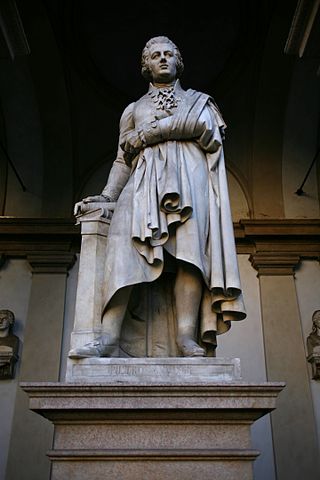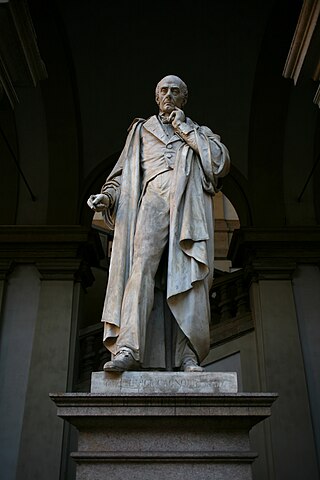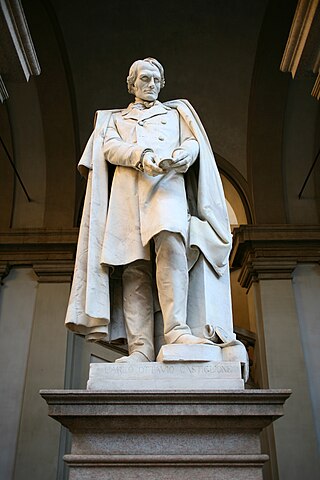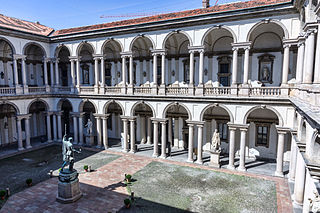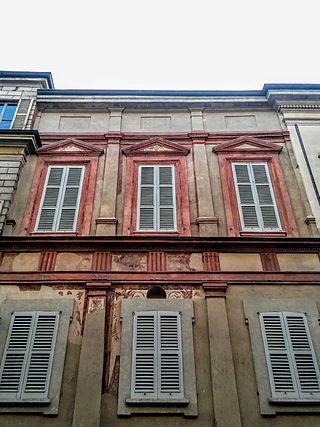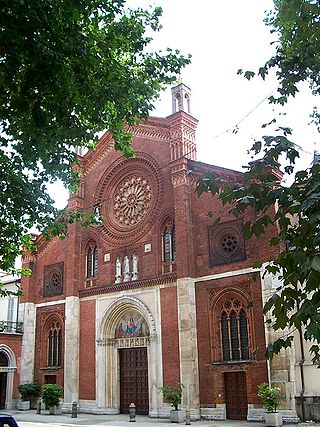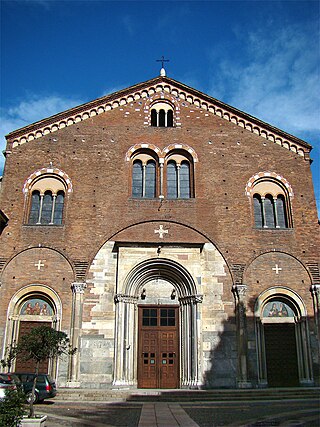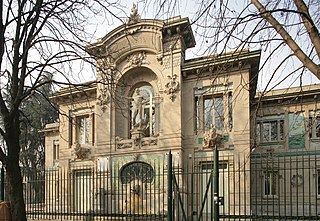Self-guided Sightseeing Tour #1 in Milan, Italy
Legend
Guided Free Walking Tours
Book free guided walking tours in Milan.
Guided Sightseeing Tours
Book guided sightseeing tours and activities in Milan.
Tour Facts
6.6 km
95 m
Experience Milan in Italy in a whole new way with our free self-guided sightseeing tour. This site not only offers you practical information and insider tips, but also a rich variety of activities and sights you shouldn't miss. Whether you love art and culture, want to explore historical sites or simply want to experience the vibrant atmosphere of a lively city - you'll find everything you need for your personal adventure here.
Activities in MilanIndividual Sights in MilanSight 1: Chiesa di San Pietro in Sala
The church of San Pietro in Sala is a Catholic place of worship in Milan, located in the western part of the city. It is the seat of the parish of the same name, included in the deanery of San Siro-Sempione-Vercellina of the Archdiocese of Milan.
Sight 2: Giardini Guido Vergani
The Guido Vergani Park and the Valentino Bompiani Garden, formerly known as Pallavicino Park, near the Pagano stop of metro line 1, were built in the sixties on land previously occupied by the western railway belt and the Sempione railway yard, abandoned in 1934.
Wikipedia: Parco Guido Vergani e Giardino Valentino Bompiani (IT)
Sight 3: Chiesa di Santa Maria Segreta
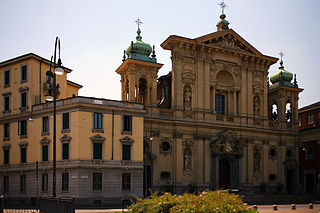
The provost's church of Santa Maria Segreta is a Catholic place of worship in Milan, Italy. the building is located in town hall 1, in via Mascheroni, in a position overlooking Piazza Tommaseo.
Sight 4: Monumento a Francesco Baracca
The monument to Francesco Baracca is a sculpture made by Silvio Monfrini. The work is located in Piazzale Francesco Baracca in Milan.
Sight 5: Museum of the Cenacolo of leonardo da vinci
The Last Supper is a mural painting by the Italian High Renaissance artist Leonardo da Vinci, dated to c. 1495–1498, housed in the refectory of the Convent of Santa Maria delle Grazie in Milan, Italy. The painting represents the scene of the Last Supper of Jesus with the Twelve Apostles, as it is told in the Gospel of John – specifically the moment after Jesus announces that one of his apostles will betray him. Its handling of space, mastery of perspective, treatment of motion and complex display of human emotion has made it one of the Western world's most recognizable paintings and among Leonardo's most celebrated works. Some commentators consider it pivotal in inaugurating the transition into what is now termed the High Renaissance.
Sight 6: Santa Maria delle Grazie
Get Ticket*Santa Maria delle Grazie is a church and Dominican convent in Milan, northern Italy, and a UNESCO World Heritage Site. The convent contains the mural of The Last Supper by Leonardo da Vinci, which is in the refectory.
Sight 7: Civica raccolta delle stampe Achille Bertarelli
The "Achille Bertarelli" Civic Collection of Prints is based at the Castello Sforzesco in Milan.
Wikipedia: Civica raccolta delle stampe Achille Bertarelli (IT), Website
Sight 8: Museo degli Strumenti Musicali
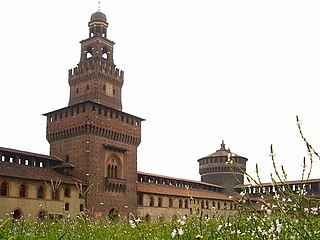
The Museum of Musical Instruments of Milan exhibits over 700 musical instruments from the fifteenth to twentieth centuries with particular attention to Lombard instruments. The collection contains plucked instruments, Lombard and Cremonese violins, hunting horns, numerous wood instruments, bassoons, pianos and some ancient organs. In particular the Cremonese lutherie is appreciated all over the world for the high quality of its musical instruments. The museum also displays the equipment of the former Studio di fonologia musicale di Radio Milano.
Wikipedia: Museum of Musical Instruments (Milan) (EN), Website
Sight 9: Monumento a san Giovanni Nepomuceno
The monument to St. John of Nepomucene is a sculpture by Giovanni Dugnani placed in the courtyard of the Sforza Castle in Milan.
Wikipedia: Monumento a san Giovanni Nepomuceno (Milano) (IT)
Sight 10: Museum of Ancient Art
The Museo d'Arte Antica is an art museum in the Castello Sforzesco in Milan, in Lombardy in northern Italy. It has a large collection of sculpture from late antiquity and the medieval and Renaissance periods. The various frescoed rooms of the museum house an armoury, a tapestry room, some funerary monuments, Michelangelo's Rondanini Pietà and two medieval portals.
Sight 11: Museo delle Arti Decorative
The Applied Arts Collection of Milan is located in the Sforza Castle museum complex under the management of the municipality of Milan, Italy. The museum is divided into several sections with particular emphasis on jewelry, ivories, pottery and art glass.
Sight 12: Museo dei Mobili e delle Sculture Lignee
The Antique Furnishings & Wooden Sculpture Museum of Milan is located on the first floor of the Sforza Castle ducal courtyard and it is part of the Sforza Castle's Civic Museum complex.
Wikipedia: Antique Furniture & Wooden Sculpture Museum (EN), Website
Sight 13: Egyptian Museum
The Museo Egizio or Egyptian Museum is a museum sited in the Sforza Castle of Milan, Italy. The Castle is one of the most famous monuments in Milan and is home to several museums including the Egyptian Section of the Milan Archaeological Museum, the Museum of Ancient Art, the Pinacoteca and the Museum of Musical Instruments.
Sight 14: Pinacoteca del Castello Sforzesco
The Pinacoteca del Castello Sforzesco is an art gallery in the museum complex of the Sforza Castle in Milan, Italy.
Sight 15: Museo d'arte e scienza
The Museum of Art and Science in Milan, a stone's throw from the Sforza Castle, was founded in 1990 by the German physicist Gottfried Matthaes.
Sight 16: Chiesa di Santa Maria del Carmine

Santa Maria del Carmine is a church in Milan, Italy. It was built in 1446.
Sight 17: Monumento a Francesco Hayez
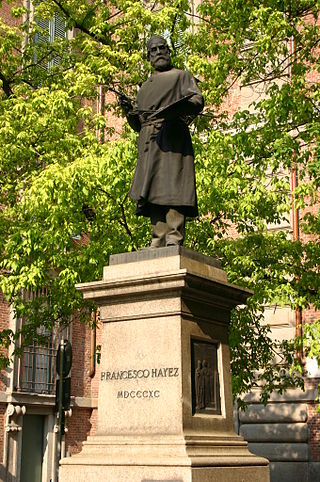
The Monument to Francesco Hayez is a bronze sculpture on a plinth located in piazzetta Brera (a small park just south of the main facade of the Brera Academy in Milan, Italy. The statue was commissioned in 1884, two years after the painter's death, from the sculptor Francesco Barzaghi, and inaugurated on 10 February 1890, on the seventh anniversary of his death.
Sight 18: Monumento a Gabrio Piola
The monument to Gabrio Piola is a sculptural work created by Vincenzo Vela (1820-1891) placed in the courtyard of honor of the Brera palace in Milan.
Sight 19: Monumento a Tommaso Grossi
The monument to Tommaso Grossi is a sculptural work created by Vincenzo Vela (1820-1891) placed in the courtyard of honor of the Brera palace in Milan.
Sight 20: Napoleone come Marte Pacificatore
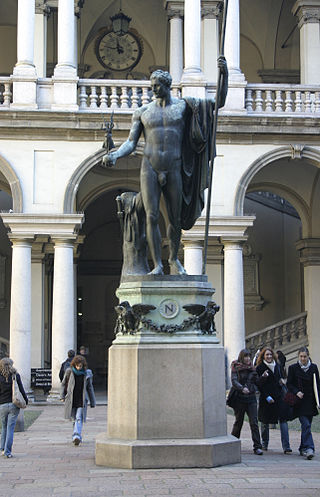
Napoleon as Mars the Peacemaker is a bronze cast of the marble sculpture of the same name by Antonio Canova. It was commissioned from Canova in spring 1807 by Charles-Jean-Marie Alquier, French ambassador to Rome, commissioned it from Canova for 5,000 Louis as a gift to Eugene de Beauharnais, viceroy of the Kingdom of Italy. It was cast in 1811 and De Beauharnais sent it to Milan in May 1812, but the city found it difficult to find a site for it. It was finally moved to its present site in the main courtyard of the Palazzo di Brera (now the Pinacoteca di Brera and inaugurated there on 14 August 1859 during Napoleon III's visit.
Sight 21: monumento a Bonaventura Cavalieri
The monument to Bonaventura Cavalieri is a sculptural work created by Giovanni Antonio Labus (1806-1857) placed in the courtyard of honor of the Brera palace in Milan.
Sight 22: Monumento a Pietro Verri
The monument to Pietro Verri is a sculptural work created by Innocenzo Fraccaroli (1805-1882) placed in the courtyard of honor of the Brera palace in Milan.
Sight 23: monumento a Luigi Cagnola
The monument to Luigi Cagnola is a sculptural work created by Benedetto Cacciatori (1794–1871) placed in the courtyard of honor of the Brera palace in Milan.
Sight 24: monumento a Carlo Ottavio Castiglioni
The monument to Carlo Ottavio Castiglioni is a sculptural work created by Antonio Galli (1812–1861) placed in the courtyard of honor of the Brera palace in Milan.
Sight 25: Pinacoteca di Brera
The Pinacoteca di Brera is the main public gallery for paintings in Milan, Italy. It contains one of the foremost collections of Italian paintings from the 13th to the 20th century, an outgrowth of the cultural program of the Brera Academy, which shares the site in the Palazzo Brera.
Sight 26: Palazzo Landriani
Palazzo Landriani is a historic building in Milan, located in via Borgonuovo n. 25. The building is currently home to the Lombard Institute Academy of Sciences and Letters.
Sight 27: Chiesa parrocchiale di San Marco
San Marco is a church in Milan, northern Italy.
Sight 28: Basilica di San Simpliciano
The Basilica of San Simpliciano is an ancient Roman Catholic church in the centre of Milan, region of Lombardy, Italy: the church, commissioned by the 4th century bishop St Ambrose, is the second oldest known Christian church with a Latin cross layout. It is dedicated to Saint Simplician, who was Ambrose's successor as bishop of Milan.
Sight 29: Luci nel bosco
Lights in the Woods is a sculpture by Luciano Minguzzi located in Largo Paolo Grassi in Milan.
Sight 30: Acquario Civico
The Civic Aquarium of Milan is an aquarium in Milan, Italy, and the third oldest aquarium in Europe. Built in 1906 on the occasion of the Milan International, It is the only surviving building from the event. Sited on the edge of Sempione Park, the aquarium has over 100 different types of underwater life located in several tanks with a particular attention for the fishes and aquatic vegetation of the Italian seacoasts, lakes, and rivers.
Sight 31: Palazzina Appiani
Palazzina Appiani is a historical building located in Milan, northern Italy. It was built as the entrance hall of the arena at the beginning of the 19th century by the French, who occupied Milan in 1796. Its original function was to be the official gallery and guest residence to host Napoleon's family during his public appearances. It is located in Parco Sempione, the biggest park in the city, which also comprises the Sforza Castle and the Arch of Peace. Adjacent to the Arena Civica, the Palazzina is now entrusted to FAI – Fondo Ambiente Italiano.
Share
How likely are you to recommend us?
Disclaimer Please be aware of your surroundings and do not enter private property. We are not liable for any damages that occur during the tours.
GPX-Download For navigation apps and GPS devices you can download the tour as a GPX file.
